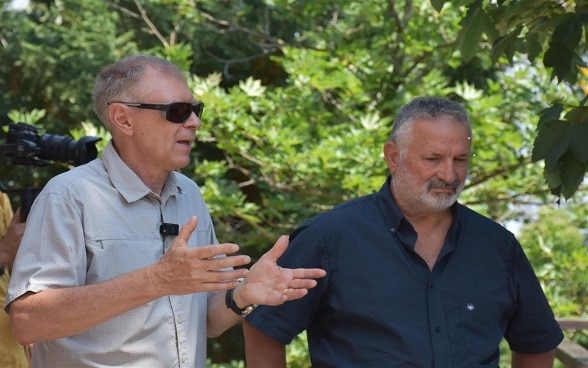
A four-year collaboration between Swiss and Albanian archaeologists successfully concludes the first phase 2021-2025, qualifying the site near Lin, in Pogradec, as the oldest stilt-dwelling settlement in Europe.
Swiss Ambassador Ruth Huber praised the commitment of the Albanian side and emphasized the importance of this project both in terms of science and cooperation between the two countries. She emphasized that this scientific initiative of the University of Bern is a collaboration that also increases the capacities of Albanian scientific institutions.
“The excavations have once again yielded very good results. We can confirm that this is the oldest settlement in Europe with preserved wood and organic materials and it is very special because the findings are very promising,” said Professor Albert Hafner from the University of Bern, team leader.
The Swiss professor described the Lin site as one of the best-preserved sites in Europe and of exceptional value for understanding the beginnings of civilization on the continent.
“We have found abundant archaeological material, both at the ceramic level and in terms of tools, bones, and stone,” said archaeologist Adrian Anastasi.
During the latest mission, teams of archaeologists have conducted research both along the shores of the Lake and underwater. Some of the findings include:
• excavation of land trenches
• more wooden piles from the dwellings
• archaeological ceramic layers decorated with impressions – one of the earliest forms of pottery. This proves the connection of the Lin site with the Adriatic coast.
• a new palisade that brings the number of surrounding (defensive) rings of the site to five
• large piles of pine trees thought to be the remains of one or more houses
• for the first time the tree ring chronologies of the Lin site match those of Ohrid – dendrochronology is working for wider distances
• confirmation that Lin 3 covers 2,000 years of settlement history and at least 10-12 different phases or villages over the time span of 6,000 – 4,000 BC.
The discoveries in Lin and Buqezë are attracting the attention of international experts and European cultural institutions, turning the area into a reference point for archaeological research and Albanian cultural heritage. This project, beyond its scientific values, also represents a cooperation bridge between Albania and Switzerland in promoting the historical wealth of the region.
